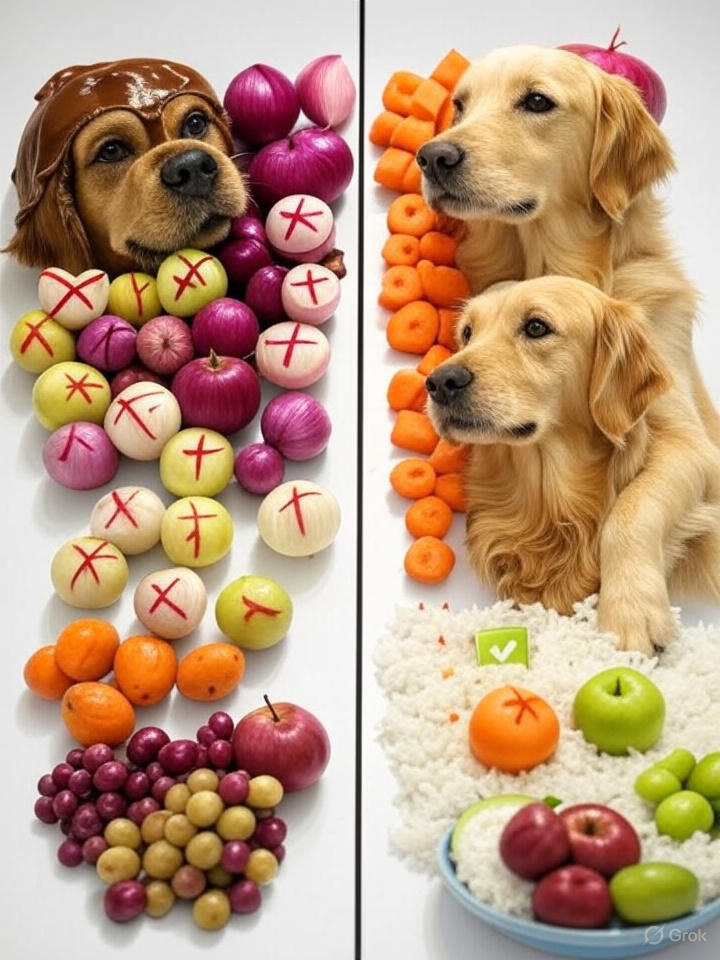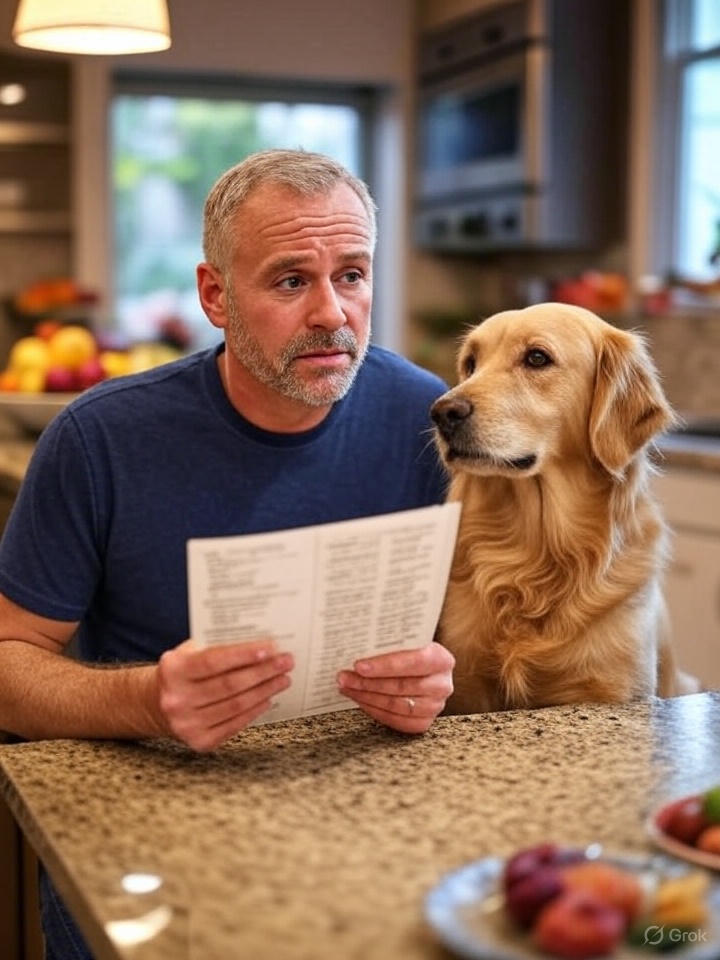As a responsible dog owner, understanding what foods are poisonous to dogs is crucial for your pet’s health and safety. While dogs have been our companions for thousands of years, their digestive systems haven’t evolved to handle many human foods. This comprehensive guide covers everything you need to know about toxic foods for dogs, safe alternatives, and emergency response protocols.
Why Human Foods Can Be Dangerous for Dogs
Dog Metabolism and Toxin Sensitivity
Dogs metabolize substances differently than humans. According to veterinary research published on Wikipedia’s canine nutrition page, dogs lack certain enzymes that break down specific compounds. For example, methylxanthines (found in chocolate and coffee) remain in a dog’s system much longer, causing potentially fatal toxicity.
The American Kennel Club and Forbes Health consistently emphasize that a dog’s liver processes toxins at different rates than humans, making seemingly harmless foods potentially lethal for our four-legged friends.
Digestive and Bacterial Hazards
Raw foods pose additional risks due to bacterial contamination and digestive complications. Salmonella and E. coli bacteria, which humans might fight off, can cause severe illness in dogs with compromised immune systems.
The Complete List of Toxic Foods for Dogs
1. Chocolate, Coffee & Caffeine (Methylxanthines)

Theobromine and caffeine are the primary culprits in chocolate toxicity. Dark chocolate and cocoa powder contain the highest concentrations, with just 20mg per kilogram of body weight causing symptoms.
Symptoms include:
- Vomiting and diarrhea
- Increased heart rate
- Seizures
- Hyperthermia
2. Xylitol in Sugar-Free Products
This artificial sweetener, common in sugar-free gum and diet foods, causes rapid insulin release in dogs, leading to hypoglycemia within 10-60 minutes.
Found in:
- Sugar-free gum and mints
- Diet foods and drinks
- Some peanut butter brands
- Medications and vitamins
3. Grapes and Raisins: Kidney Failure Risk
Even small amounts of grapes or raisins can cause acute kidney injury. The RSPCA reports that as few as 10-12 grapes can be fatal for a 30kg dog.
4. Allium Family: Garlic, Onions, Chives, and Leeks
These foods cause Heinz body anemia by damaging red blood cells. Garlic is approximately 5 times more potent than onions, with toxicity occurring at 15-30 grams per kilogram of body weight.
5. Macadamia Nuts and Other Dangerous Nuts
Macadamia nuts cause weakness, vomiting, and hyperthermia. The British Veterinary Association notes that symptoms typically appear within 12 hours of ingestion.
6. Avocado: Persin Poisoning
Persin, found in avocado leaves, bark, and fruit, causes digestive upset and can lead to pancreatitis in severe cases.
7. Alcohol and Yeast Dough
Alcohol causes the same effects in dogs as humans but at much lower doses. Raw yeast dough expands in the stomach, potentially causing gastric bloat – a life-threatening condition.
8. Stone Fruits: Cherries, Apricots, and Plums
The pits, stems, and leaves contain cyanogenic compounds that release cyanide when digested. Even small amounts can cause acute toxicity.
9. Wild Mushrooms
While store-bought mushrooms are generally safe, wild varieties can contain amatoxins and other deadly compounds. The Kennel Club advises avoiding all wild mushrooms entirely.
10. Nightshade Family: Tomatoes and Potatoes
Green tomatoes and potato skins contain solanine, causing gastrointestinal upset and neurological symptoms.
11. Moldy Foods and Aflatoxin Exposure
Aflatoxins produced by mold growth can cause liver damage and neurological symptoms. Tremorgenic mycotoxins in moldy foods cause tremors and seizures.
12. Salt and High-Sodium Foods
Sodium toxicity occurs when dogs consume excessive salt, leading to dehydration, vomiting, and potentially hypernatremia.
13. Dairy Products and Lactose Intolerance
Most adult dogs are lactose intolerant, lacking sufficient lactase enzyme to digest dairy products properly.
14. Raw Meats, Eggs, and Cooked Bones
Raw foods carry bacterial risks, while cooked bones splinter and cause internal injuries. The PDSA (People’s Dispensary for Sick Animals) strongly advises against feeding cooked bones.
Safe Human Foods for Dogs
Fruits Your Dog Can Enjoy
- Apples (remove seeds and core)
- Bananas (in moderation)
- Blueberries (antioxidant-rich)
- Watermelon (seedless)
Dog-Safe Vegetables
- Carrots (great for dental health)
- Green beans (low calorie)
- Sweet potatoes (cooked)
- Pumpkin (excellent for digestion)
Protein Sources
- Cooked chicken (boneless, skinless)
- Cooked salmon (omega-3 rich)
- Plain rice (for upset stomachs)
- Quinoa (protein-packed grain)
Recognizing Food Toxicity Symptoms
Immediate symptoms (within 2-4 hours):
- Vomiting and diarrhea
- Loss of appetite
- Lethargy and weakness
- Excessive drooling
Severe symptoms requiring immediate veterinary attention:
- Difficulty breathing
- Seizures or tremors
- Collapse or unconsciousness
- Extreme dehydration
Emergency Response Protocol
When to Call Your Veterinarian
Contact your vet immediately if your dog shows any toxicity symptoms. The Animal Poison Control Centre (APCC) operates 24/7 helplines for emergency guidance.
UK Emergency Numbers:
- RSPCA: 0300 1234 999
- Vets Now: 01332 832 999
- Animal PoisonLine: 01202 509 000
First Aid Steps
- Remove access to the toxic food immediately
- Don’t induce vomiting unless specifically instructed by a veterinarian
- Collect information: what was eaten, how much, and when
- Keep your dog calm and monitor symptoms
- Bring packaging or samples to the vet if possible
Prevention Strategies
Dog-proof your home:
- Store human food in sealed, elevated containers
- Educate family members about toxic foods
- Create a “safe food list” for dog-sitters
- Install childproof latches on cabinets
Frequently Asked Questions
Q: Can dogs eat peanut butter? A: Yes, but only xylitol-free varieties. Always check ingredient labels, as many sugar-free options contain this deadly sweetener.
Q: How much chocolate is toxic? A: Dark chocolate: 20mg/kg body weight can cause symptoms. Milk chocolate: 100-200mg/kg. White chocolate contains minimal theobromine but is still unhealthy.
Q: Are there any nuts that are safe for dogs? A: Plain peanuts (unsalted) are generally safe in small quantities, but most other nuts should be avoided due to choking hazards and digestive issues.
Q: Can dogs eat cooked garlic in small amounts? A: No. Even small amounts of garlic can cause cumulative toxicity over time, leading to anemia.
Interactive Safety Checklist
Before giving your dog human food, ask:
- ✅ Is it on the approved safe list?
- ✅ Does it contain xylitol, chocolate, or other toxins?
- ✅ Is it properly prepared (cooked, boneless)?
- ✅ Am I giving an appropriate portion size?
Advanced Toxicity Information
Lesser-Known Dangerous Foods
Nutmeg: Contains myristicin, causing hallucinations and seizures Hops (in beer): Cause malignant hyperthermia in dogs Cream of tartar: High potassium levels can cause cardiac issues
Breed-Specific Sensitivities
Certain breeds show increased sensitivity to specific toxins:
- Labrador Retrievers: Higher chocolate toxicity risk due to genetic factors
- Asian breeds (Shiba Inu, Akita): Increased alcohol sensitivity
- Herding breeds: Enhanced sensitivity to certain medications and toxins
Building a Dog-Safe Kitchen
Storage Solutions
- Airtight containers for human snacks
- High shelves for toxic items
- Separate dog food storage areas
- Emergency contact list on the refrigerator
Safe Treat Alternatives
Instead of human food, consider commercially prepared dog treats that meet AAFCO standards. Popular UK brands like James Wellbeloved and Burns Pet Food offer healthy alternatives.
Conclusion: Keeping Your Dog Safe
Understanding what foods are poisonous to dogs is essential for responsible pet ownership. While this guide covers the most common toxic foods, always consult with your veterinarian before introducing new foods to your dog’s diet.
Remember, prevention is always better than treatment. By dog-proofing your home, educating your family, and maintaining a list of emergency contacts, you can help ensure your furry friend stays healthy and happy.
For more comprehensive pet care guides and UK-specific pet regulations, visit our complete resource center at https://pocketpets.site/uk-pet/.
Sources and Further Reading:
- Wikipedia: Canine Nutrition and Metabolism
- Forbes Health: Pet Safety Guidelines
- RSPCA: Animal Welfare Standards
- The Kennel Club: Canine Health Resources
- PDSA: Pet Health Information
- British Veterinary Association: Clinical Guidelines

